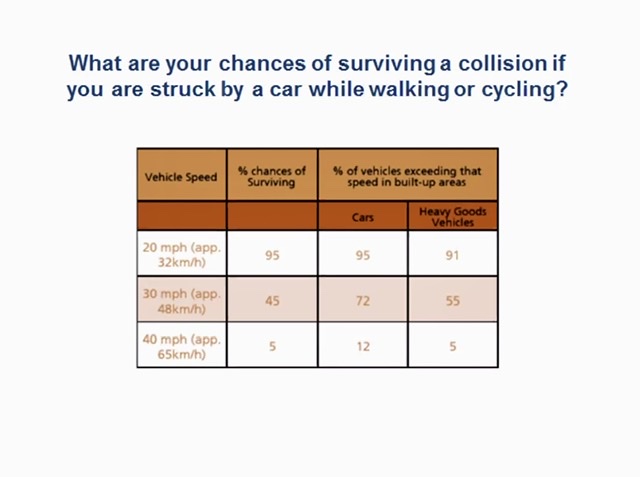Fair comment - it was one of the upper results when I searched. The messenger may be dodgy but the message isn't - here's a couple of government documents discussing it:
http://data.parliament.uk/Deposited...DfTCircular01-2013SettingLocalSpeedLimits.pdf
Page 11: "34. Mean speed and 85th percentile speed (the speed at or below which 85% of vehicles are travelling) are the most commonly used measures of actual traffic speed. Traffic authorities should continue to routinely collect and assess both, but mean speeds should be used as the basis for determining local speed limits.
35.For the majority of roads there is a consistent relationship between mean speed and 85th percentile speed. Where this is not the case, it will usually indicate that drivers have difficulty in deciding the appropriate speed for the road, suggesting that a better match between road design and speed limit is required. It may be necessary to consider additional measures to reduce the larger than normal difference between mean and 85th percentile speeds or to bring the speed distribution more in line with typical distributions. The aim for local speed limits should be to align the speed limit to the conditions of the road and road environment."
https://www.standardsforhighways.co.uk/prod/attachments/8995b012-dac8-4ee3-a8a8-03da2e5c2ae4
Page 12: "85th percentile speed calculation
3.1 85th percentile vehicle speeds shall be calculated where designs are to be based on measured vehicle speeds. NOTE 1: 85th percentile vehicle speeds can be calculated using a variety of methods, including: 1) built-in functions in spreadsheet software; 2) statistical formulae; and 3) listing out the measured speeds in ascending order and counting down from the highest value until 15% of the values have been passed (the value that is arrived at is the 85th percentile speed). NOTE 2: The method of listing out the measured speeds in ascending order and counting down to establish the 85th percentile is only suitable for samples that include 200 or more vehicles."
I'm not sure how recent the second link is and there may be a newer version of the first but 2013 was the most recent I could find.
P.S. Some would say Monbiot's also a bit of a fruitloop himself...

I'm not sure about where you are but a significant number of roads near me that were once NSL (60 and 70) are now 50 limits, 50 limits are now 40.
Again, to be clear I'm not arguing against speed limits, I'm questioning the validity with which they're set. Our roads are some of the safest in the world already - where's the tipping point for drivers to say "That's absurd..." when limits reduce again and again?
Also some here may be of the opinion I'm a speed-crazed loon - I'm very much not, although I will admit to some tomfoolery in my younger days...


